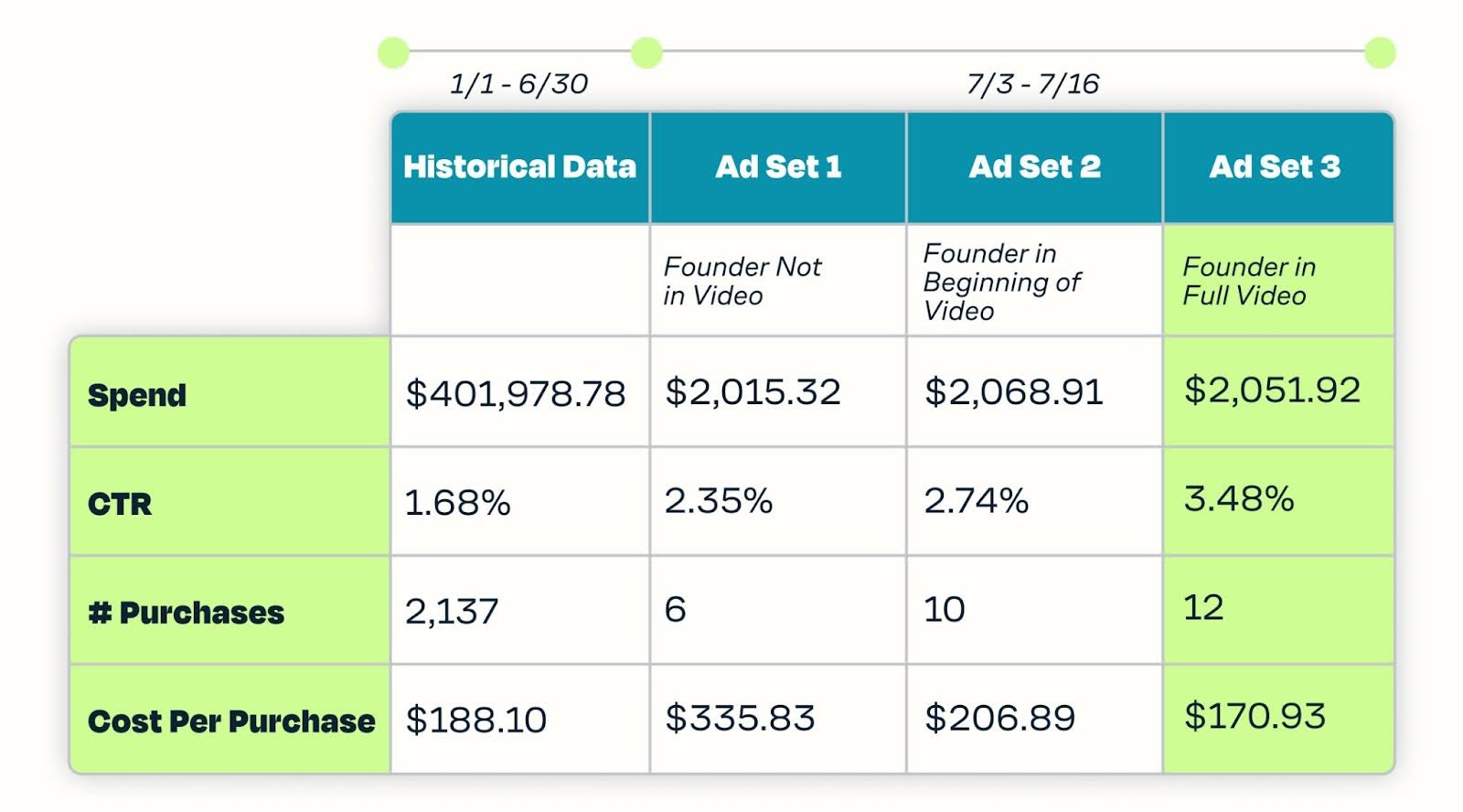Creative Testing at Scale: A Framework for Marketing Leaders
Consumer behavior and ad platform algorithms never stop evolving. What drove engagement and conversions last month might not move the needle today. To keep your campaigns effective and your strategies sharp, you’ll need more than intuition—you’ll also need a repeatable, data-driven approach to testing creative at scale. At Tuff, we specialize in growth marketing, and our proven framework for creative testing is designed to deliver insights that translate directly into revenue.
The Strategic Value of Creative Testing
For growth-minded marketing teams, creative testing isn’t a luxury; it’s a necessity. With millions of dollars at stake, every creative decision must be validated through data. Our method of testing empowers your team to identify what truly works and double down on strategies that yield the best return on investment. In an era where marketing budgets are scrutinized more than ever, creative testing ensures that your spend isn’t just well-allocated—it’s optimized.
By investing in a robust creative testing framework, marketing teams can achieve more efficient ad spend, improved campaign performance, and a deeper understanding of what drives their audience to action.
How to Build a Scalable Creative Testing Framework
We know your marketing ecosystem is complex. Managing diverse campaigns, handling significant budgets, and meeting the expectations of stakeholders demands a sophisticated approach. At Tuff, we’ve developed a streamlined testing framework that delivers clarity and impact. Here’s how you can put it into action.
Step 1: Conduct Research and Develop a Hypothesis 🔬
Your first step isn’t launching ads—it’s analyzing data. Dive deep into historical performance to identify patterns and opportunities. What type of imagery has historically driven the highest click-through rates? Does a specific message style or call-to-action consistently outperform others?
🙇 Example from Tuff: When we reviewed performance data for a B2B SaaS client, we found that ads featuring real employees, particularly the founder, had 35% higher engagement compared to more product-centric visuals. This led us to a hypothesis: “If we feature the founder prominently in our creative, we’ll see an uptick in click-through rates and conversions.” From there, we developed a series of ad variations to put this theory to the test.
The stronger your hypothesis, the more actionable your insights. At Tuff, we never base hypotheses on guesswork—only on concrete data.
Step 2: Define Crystal-Clear Success Metrics
Before you even think about running your test, lock down your metrics. Which KPIs will you use to determine whether a creative variation is a success or failure? For our campaigns, we often look at metrics like CTR, conversion rate, CPA, and return on ad spend (ROAS).
🙇 Example: In the founder-focused campaign, we zeroed in on CTR and volume of conversions as our North Star metrics. We set historical benchmarks to understand whether our creative was an incremental improvement or a game-changer.
Tip: Don’t get lost in the data. Focus on metrics that directly impact your bottom line. This keeps your creative analysis relevant and actionable.
Step 3: Address Critical Questions Before Execution
A well-executed test starts with answering these foundational questions:
- How Much Budget Should You Allocate? For large-scale testing, dedicate 10-15% of your total monthly ad budget to experimentation. This budget gives you the bandwidth to test multiple creative concepts without sacrificing the performance of your primary campaigns.
- How Long Should the Test Run? The duration depends on the size of your audience and the budget. Large audiences paired with significant budgets can yield statistically significant data in 7-10 days. Niche audiences may require a full two weeks.
- Which Audience Should You Target? Choose a top-performing, upper-funnel audience for faster, more reliable data. This approach not only speeds up your learning but ensures you’re testing on an audience segment that matters.
Marketers need to move quickly but thoughtfully. Making informed decisions about budget and audience can make or break the success of your test.
Step 4: Build a Well-Structured Campaign for Reliable Data
At scale, even small inefficiencies can lead to big problems. Here’s how to set up your campaign for maximum clarity:
- Create a Dedicated Campaign: House all creative variations within one campaign to control variables and simplify your reporting.
- Configure Ad Sets Thoughtfully: Each ad set should represent one variation. Distribute your budget evenly to ensure a fair test. This prevents any single creative from dominating the budget and skewing results.
- Leverage Advanced A/B Testing Tools: Meta’s A/B testing feature is a game-changer. It divides your audience evenly and prevents overlap, ensuring each creative variation gets equal exposure. The cleaner your data, the more confident you can be in your conclusions.
Clean, unbiased data leads to clear, actionable insights. Our structured approach ensures that you’re not just gathering data—you’re gathering the right data.
Step 5: Analyze the Results with Precision
Once your test has run its course, it’s time to dig into the metrics. Did your winning creative truly outperform the others? Are the results statistically significant, or could they be due to chance?
🙇 Example Results: In the founder-focused campaign, we observed a 23% lift in CTR and an 18% increase in conversions compared to the next best variation. Compared to our historical benchmarks, this winning creative also delivered a 9% reduction in CPA. The data was clear: Founder-led visuals resonate deeply with our audience and drive more profitable results.
Don’t just celebrate your wins. Document why they worked and consider how to scale these learnings across your entire marketing operation.
Step 6: Document Findings and Make Optimization Ongoing
Your testing doesn’t end once you have a winner. To keep improving, treat each test as a learning opportunity. Document what worked, what didn’t, and why. Share these insights across teams to build a knowledge base that can inform future campaigns.
Make optimization a habit. At Tuff, we regularly revisit our creative strategy, using new data to inform our next round of testing. This cycle of continuous improvement keeps our clients ahead of the curve.
Navigating Challenges in Creative Testing
Even with a solid plan, testing at scale comes with hurdles. Here’s how to address common obstacles:
- Stakeholder Alignment: Big campaigns often involve multiple stakeholders, so it’s important to align on what we want to learn before testing begins. Are we validating messaging, testing new creative formats, or exploring audience behavior? Clear goals at the start help everyone understand why strategies and briefs are set up a certain way. Use simple reporting tools to keep communication transparent and show how the data connects to those goals.
- Data Fatigue: Analyzing vast amounts of data can be overwhelming. Simplify your focus to a few key metrics that matter most to your business objectives.
- Audience Overlap and Fatigue: Avoid overexposing the same audience to multiple variations. Rotate your creative regularly to keep content fresh and engaging.
Tuff’s Approach: We use segmentation strategies and rotate creative frequently to avoid fatigue while keeping messaging aligned with campaign goals.
Scaling Insights Across the Org
Once you’ve nailed down what works, it’s time to scale. Apply successful creative elements to different campaigns, regions, or even departments. Share your wins and learnings broadly to maximize their impact.
🙇 Scaling Example: We worked with a global retail brand to expand a winning social media campaign into email and paid search. By maintaining consistent messaging and visuals, the brand experienced a 15% lift in overall campaign performance.
Elevate Your Creative Testing for Growth
We believe that strategic, data-driven creative testing is the key to unlocking your marketing team’s full potential. Our framework is designed to maximize efficiency, deliver insights that drive growth, and make sure every dollar of your ad budget is working for you. If you’re ready to transform how you approach creative, let’s talk. Tuff is here to help you scale smarter and faster.








